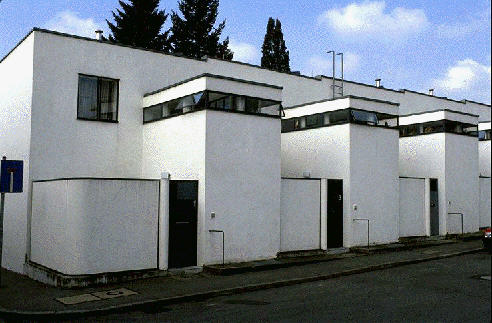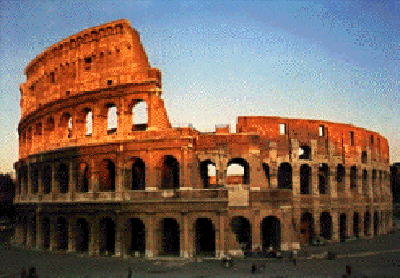MATH 7210 : Foundations of Geometry
II
University of Georgia, Spring
2001
Dr. McCrory, Instructor
Translational Symmetry
In translational symmetry, architectural elements
are translated by one or more translation vectors. Besides bilateral
symmetry, this is the most common type of symmetry in architecture.
Resource: Williams, Kim (1998). Symmetry
in Architecture. (http://turing.mi.ssau.ac.yu/vismath/kim/)
Example 1: Lloyds Building
 Location: Rome, Italy
Architect: Richard Rogers
Building Type: Commercial, corporate headquarters
Symmetry: The outside design of the first floor
is translated all the way up the building.
Resource: GreatBuildings.com (http://www.GreatBuildings.com/buildings/Lloyds_Building.html)
Location: Rome, Italy
Architect: Richard Rogers
Building Type: Commercial, corporate headquarters
Symmetry: The outside design of the first floor
is translated all the way up the building.
Resource: GreatBuildings.com (http://www.GreatBuildings.com/buildings/Lloyds_Building.html)
Example 2: Weissenhof Row Houses
 Location: Stuttgart, Germany
Architect: J. J. P. Oud
Building Type: Row houses
Symmetry: The outside archtecture of each house
is translated down the row.
Resource: GreatBuildings.com (http://www.GreatBuildings.com/buildings/Weissenhof_Row_Houses.html)
Location: Stuttgart, Germany
Architect: J. J. P. Oud
Building Type: Row houses
Symmetry: The outside archtecture of each house
is translated down the row.
Resource: GreatBuildings.com (http://www.GreatBuildings.com/buildings/Weissenhof_Row_Houses.html)
Example 3: Roman Colosseum
 Location: Rome, Italy
Architect: Unknown
Building Type: Amphitheater
Symmetry: The arches are translated around and
up three levels of the amphitheater.
Resource: Kent School District (Washington),
Darlene Bishop and Diana Eggers (http://www.kent.wednet.edu/curriculum/soc_studies/rome/Colosseum.html)
Location: Rome, Italy
Architect: Unknown
Building Type: Amphitheater
Symmetry: The arches are translated around and
up three levels of the amphitheater.
Resource: Kent School District (Washington),
Darlene Bishop and Diana Eggers (http://www.kent.wednet.edu/curriculum/soc_studies/rome/Colosseum.html)
Go to Spiral
or Helical Symmetry (Back)
Go
to Spherical Symmetry (Next)
Return to
Main Page


